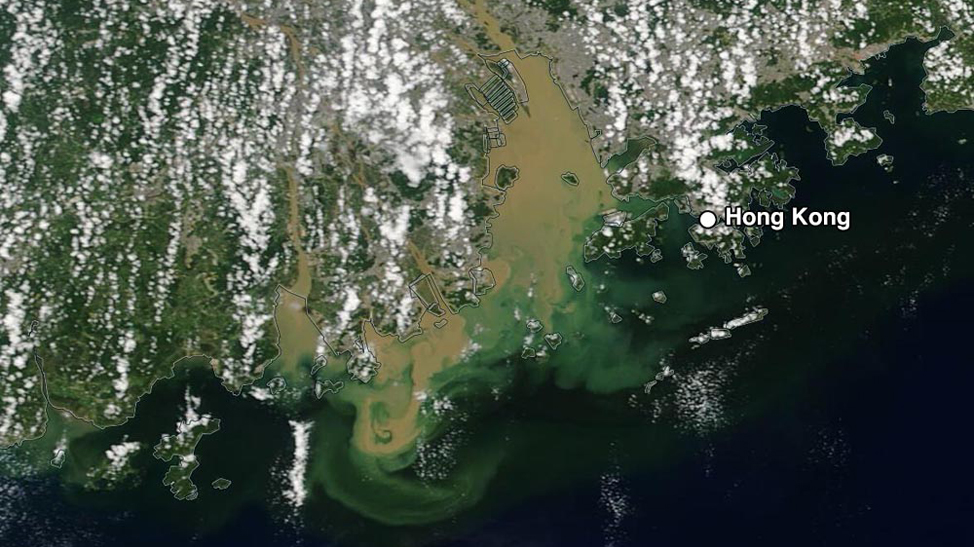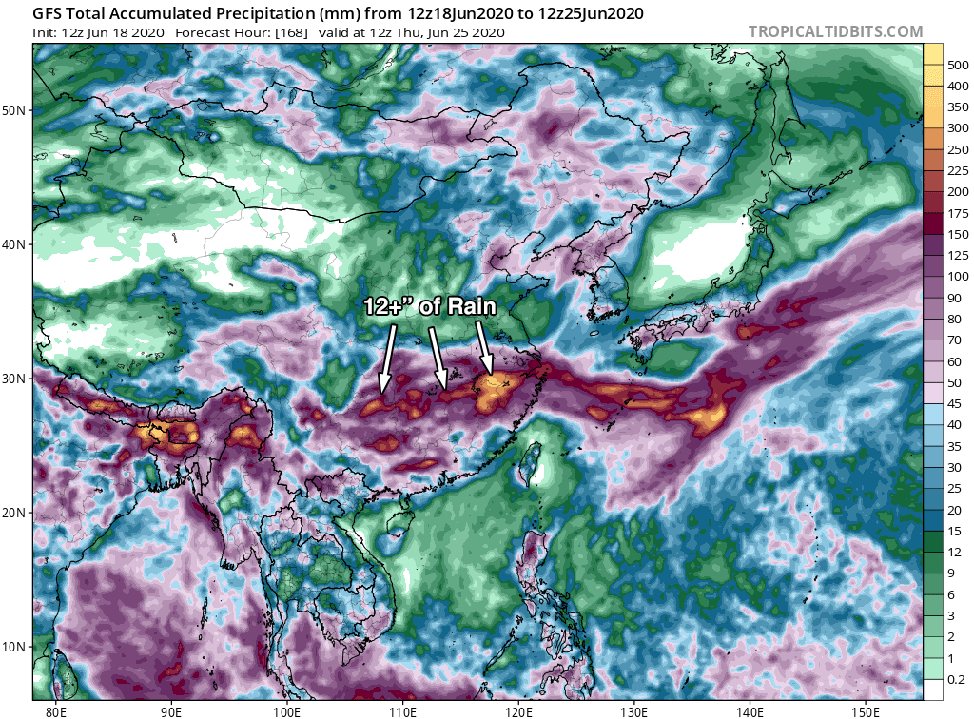
Torrential June downpours inundating southeast China have triggered destructive floods, leaving 63 people dead or missing and causing at least $2.9 billion in damage, according to the China Ministry of Emergency Management. The floods have destroyed 7,300 homes, damaged another 138,000, and forced evacuations of nearly 500,000 people.
According to statistics from insurance broker Aon, the damage tally from flooding in China at this point in the month ranks as Earth’s third-most-expensive weather disaster of 2020, behind the $15 billion price tag of Cyclone Amphan (India/Bangladesh) and the $3.1 billion cost of an April severe weather outbreak in the U.S.
So far for 2020, Aon has tallied 15 billion-dollar weather disasters worldwide, a very high number so early in the calendar year. Ten of these disasters have been severe weather outbreaks in the U.S.

The floods so far in 2020 have a way to go before cracking the list of the top 10 most damaging river floods in Chinese history. According to statistics from EM-DAT, the international disaster database, China has had 10 years with inflation-adjusted river flooding damages exceeding $10 billion. The $48 billion price tag for its 1998 floods makes those the most expensive river floods in world history.
The heavy rains in China have occurred along the Mei-yu (or Baiu) front, a semi-permanent feature of Asia’s atmospheric circulation in late spring and summer. The Mei-yu front, associated with the southwest monsoon that pushes northward each spring and summer, extends from eastern China across Taiwan into the Pacific south of Japan.
The Mei-yu rains typically affect Taiwan and southeastern China from mid-May to mid-June, migrate northwards to the Yangtze River region and southern Japan during June and July, and then move farther northward into northern China and Korea during July and August. A number of studies have found that the Mei-yu rains tend to be particularly heavy in the summer after a strong wintertime El Niño event, as occurred in 1998 and 2016. There was no El Niño event preceding this year’s June 2020 floods, but conditions did hover just below the threshold for a weak El Niño during much of March and April 2020.

The flood damage in China is likely to grow during the balance of June as new rounds of torrential monsoon rains hit the nation in coming weeks. The latest precipitation forecast from the GFS model predicts a wide swath of more than 12 inches of rain will fall over much of the flood-affected area through the end of June (Figure 2.)
As the planet’s oceans and atmosphere warm up as a result of increased amounts of heat-trapping gases like carbon dioxide, more water vapor is entering the lower atmosphere, increasing the odds of extreme rainfall events.
The Yangtze River Basin of China is among the locations where a significant increase in summer precipitation was found to occur during the 20th century, as described in a 2007 paper in the International Journal of Climatology. Future decades are likely to include even greater increases in precipitation.
Studies using high-resolution global climate models have found that both average and extreme precipitation in the Mei-yu zone will increase during the 21st century (see this 2011 paper in Climate Dynamics, and the 2015 book The Monsoons and Climate Change: Observations and Modeling). The authors of the book, Hirokazu Endo and Akio Kitoh, reached a grim conclusion: “State-of-the-art climate models project that both the amount and intensity of Asian summer monsoon rainfall are likely to increase under global warming, and that the rates of increase will be higher than those in other monsoon regions.”